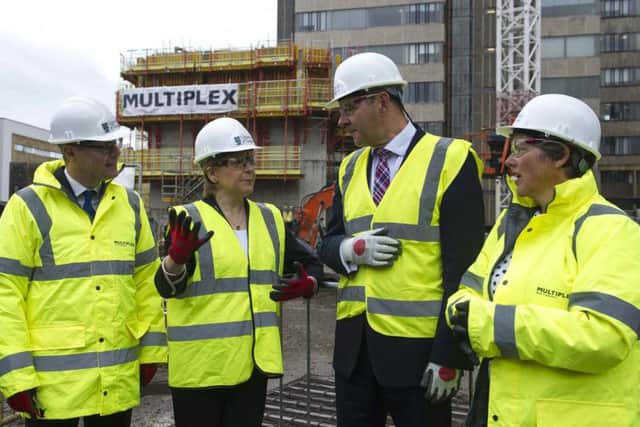Analysis: Fiscal gap between UK and Scotland expected to grow
This reflects relatively high levels of government spending and relatively low levels of onshore tax revenues. Weak economic growth in the last few years seems to have depressed revenue growth, despite increases in devolved income taxes.
The GERS estimate for Scotland’s implicit budget deficit in 2017–18 was 7.9 per cent of GDP. This compares to 1.9 per cent for the UK as a whole: a “fiscal gap” of 6 per cent GDP or around £10.3 billion. That means extra borrowing of £1,885 per person in Scotland, on top of the £600 being borrowed by the government for every person in the UK.


Advertisement
Hide AdAdvertisement
Hide AdWhile Scotland’s implicit budget deficit has fallen from 9.7 per cent of GDP in 2015-16, the fiscal gap with respect to the UK has remained roughly constant at around 6 per cent of GDP. That large gap developed between 2011-12 and 2015-16 as falls in oil production and then oil prices took their toll on offshore tax revenues from the North Sea. North Sea revenues have risen since 2015-16, from £50 million to £1.3bn in 2017-18, but remain a fraction of their 2011-12 levels of £7.9bn. We project a fall in Scotland’s implicit budget deficit from 7.9 per cent of GDP in 2017-18 to 7.4 per cent of GDP in 2022-23, and the fiscal gap with respect to the rest of the UK to grow slightly.
The main reason is that government spending per person is higher than the UK average while tax revenues are lower. Spending per person on social protection – benefits and pensions – and health is only around 7 per cent higher than the UK average. On the other hand, spending per person on transport is around 50 per cent higher, and on enterprise and economic development over 85 per cent higher than the UK average.
Substantially less is raised per person from income tax in Scotland than in the UK as a whole, whereas revenues from VAT and national insurance contributions are much more similar. Low income taxes reflect the fact that much of this is raised from those with the very highest income, a small fraction of whom live in Scotland, with most of this group in the south-east.
l David Phillips is associate director at the Institute for Fiscal Studies
